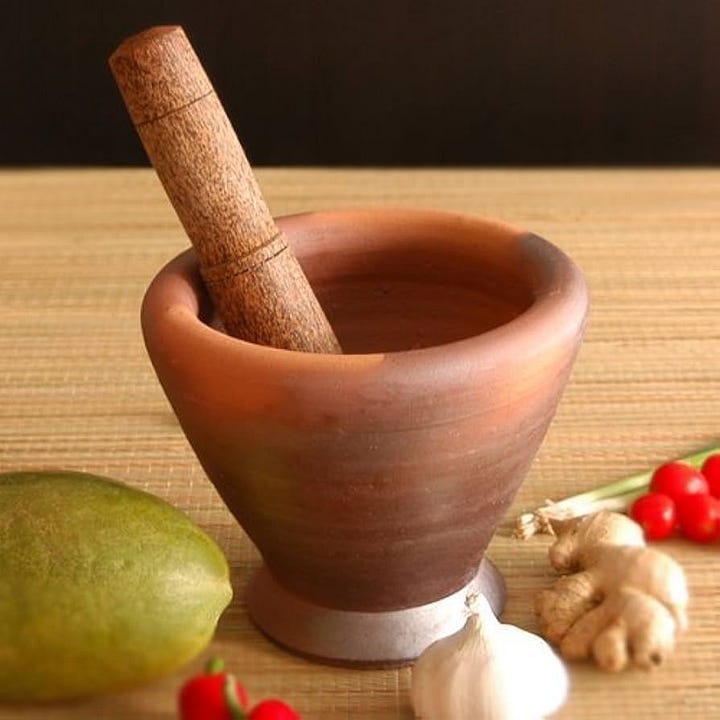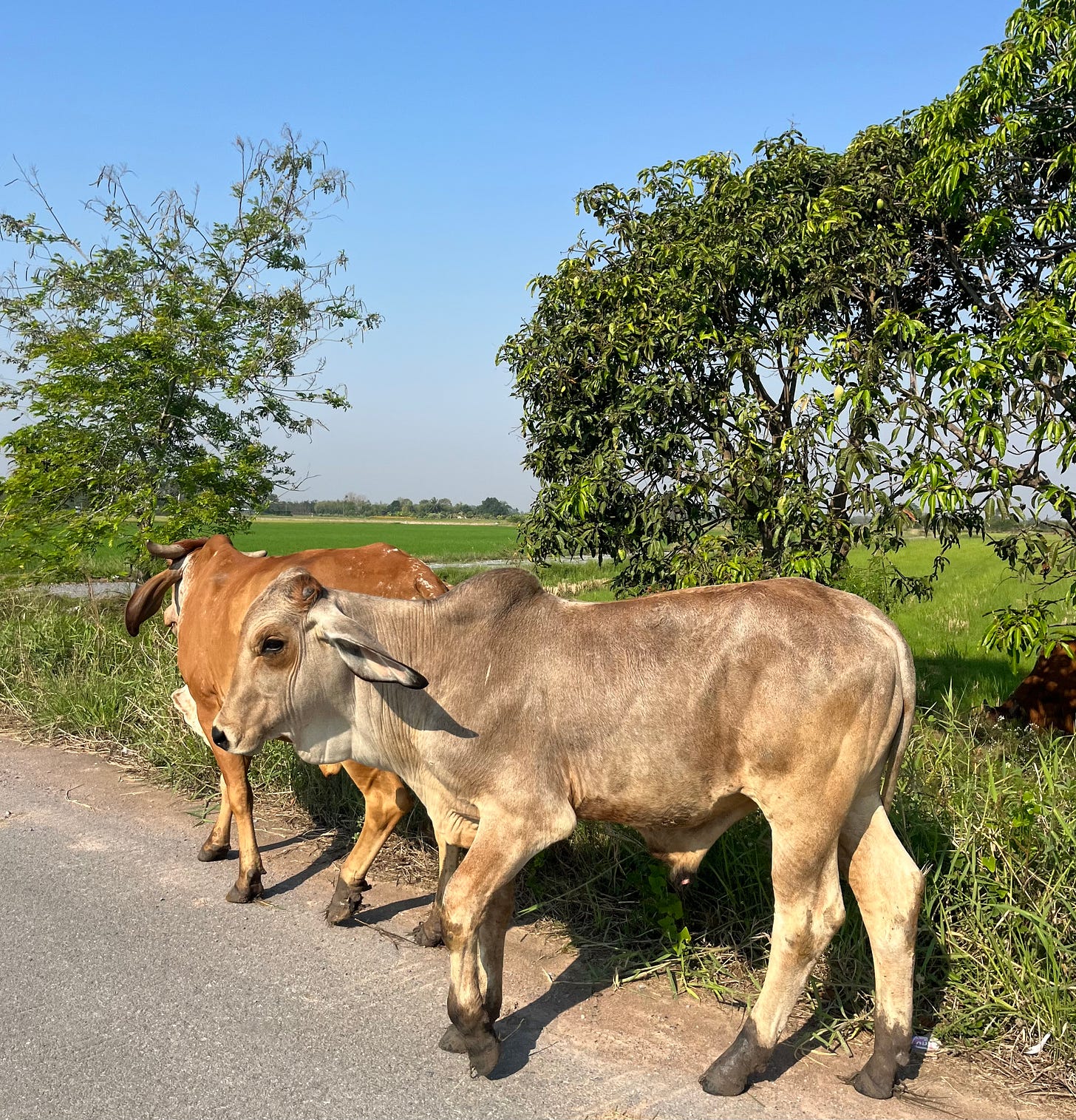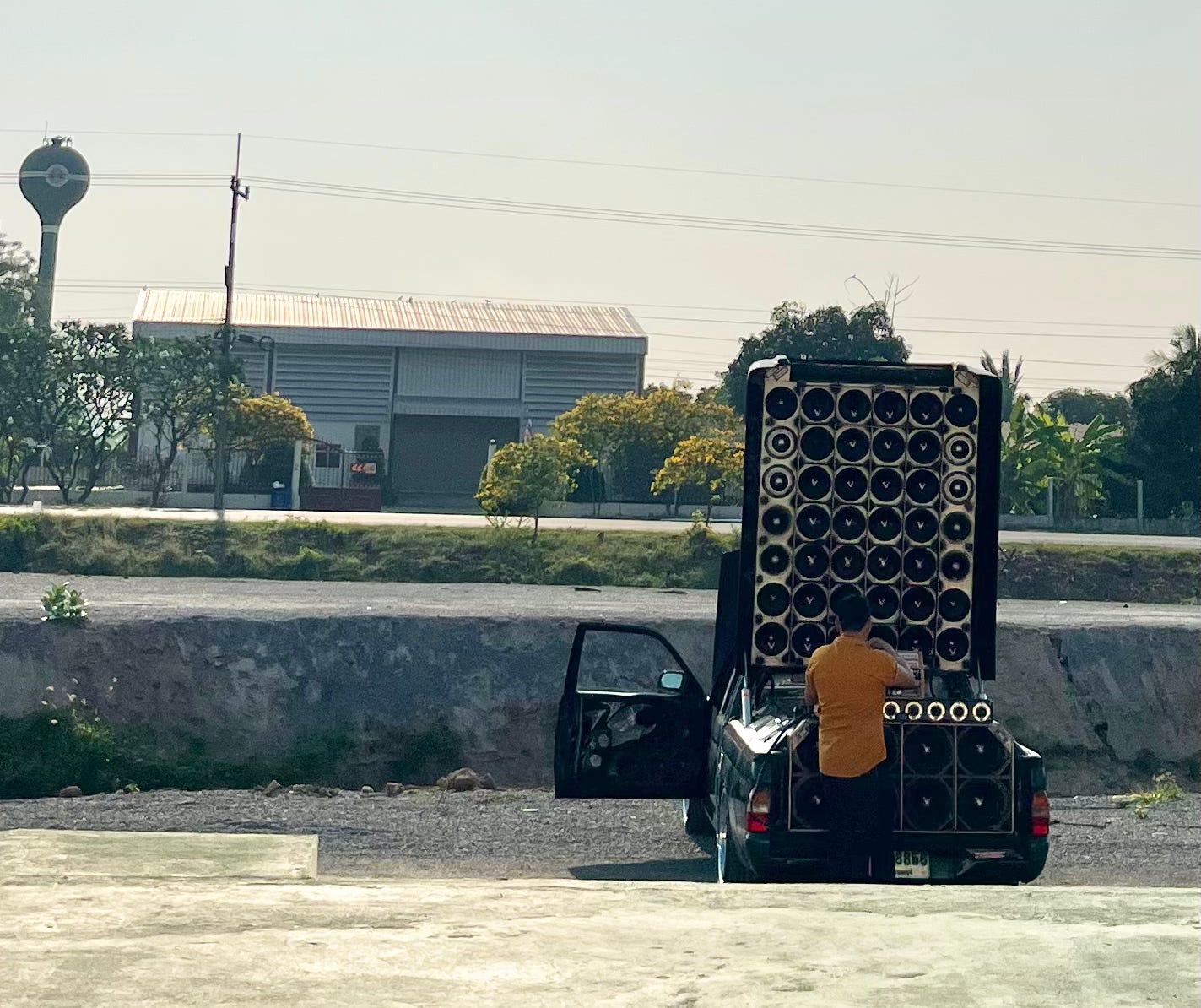Jan 28
Like many other mornings, I am awoken around 5 am to something loud. Sometimes it is from the coo-ing family of pigeons, feathered friends that I thought I would be leaving behind when I left New York City, that have nested on the balcony outside my room. Other times, my rise from slumber is a result of the blaring speakers from the neighboring wat (temple). This time the culprit is firecrackers in celebration of the Lunar New Year. I continue to experience their barrage of pops and cackles throughout the day, along with wafting scents of gunpowder, but never once do I experience them by sight.
Reflecting on this journal entry made me think about how the word "loud” has unexpectedly been a primary descriptor I would use as of lately. Not quite in a decibels-too-high way, but in the sense that a certain acuteness in hearing is developed when you are learning a new language. Thai is a tonal language, consisting of 5 tones: high, mid, low, falling, rising. All this in combination with my limited vocabulary and the numerous new non-verbal sounds has put my listening abilities to the test.
Below, I list off some of the more interesting sounds — some more pleasant than others — of Thailand I have encountered in an attempt to provide a more immersive illustration of my life right now.
Wats. The horn speakers atop the temples rotate between the occasional community announcements, sermons, and monk chants during the early morning hours.
Dogs. Their barking sounds the same as American dogs, but they now cue me to either stop and slowly tread by or pedal even faster. I yell “bai” (“go”) at them but they know Thai better than I do and I can’t seem to always get the accent right.
Birds. There are plenty of other birds, aside from the pigeons, I am still working to identity. Their various chirps and trills have been so loud that they can be heard by the other end of phone calls from friends back in America. Trying to take a note from Elizabeth Bock here and become more familiarized with the names of local flora and fauna.
Other animals. Between my training site and new permanent site (a separate post on this to come shortly!), I have been in close proximity to cows, chicken, ducks, etc., as many of the smaller towns in Thailand are highly agricultural. You can usually smell this category before you hear them haha.
Transportation. Although biking is my primary mode of transportation, motorcycles and cars are what most Thai people use to get around so I know that the ringing of bike bells or the clicking of shifting gears is a ‘hello’ from one of my fellow volunteers. Aside from those wheeled vehicles, there are quite a few other modes of transit that can be seen around town. Song taws (trucks with two rows of seats in the truck bed), tuk tuks (three wheeled vehicles that are essentially motorcycles guiding a roofed passenger cart), and a range of buses traverse the roads of Thailand.
What is louder than the noise of their engines are the several, large speakers that are occasionally strapped to the backs pick-up trucks. They are used for music during large-scale events like monk ordinations or for local election campaigning, adorned with posters endorsing community leaders. The magnitude of the sounds is honestly impressive.
Cooking. Thai cuisine requires a whole new set of kitchen tools in order to create their delicious dishes. The sound of the metal-on-metal high-pitched clanking of the Thai spatula on the wok with the sharp smell of sautéed Thai chilies means a market or restaurant is surely nearby. The mortal and pestle used to grind spices and make som tam (green papaya salad), conversely, produces a low, soothing drumming tune. The sounds that indicate the arrival of food are highly different from the typical plastic/wooden spatulas against pans of American kitchens.


As many other Asians cultures are, Thailand’s is highly food-centered. Instead of the typical American “hi, how are you?” it is common to be greeted by questions such as “did you eat breakfast/lunch already” and “what did you eat for breakfast/lunch"? Other questions I have become well acquainted to are those that I am guaranteed to be asked during mealtimes. “aroi mai? pet mai? im mai?” (“is it tasty? is it spicy? are you full?”) When I hear any combination of these phrases, I am reminded of similar practices of care in the Korean culture that I was raised in. They represent sounds of kindness and hospitality that provide me reassurance in the arduous process of making this country home for 2 more years.
I do still listen to music when I can and hope to eventually make a playlist to share (my Spotify premium just dropped to $2.78 woot woot). But hopefully this read inspires you to appreciate the sounds of your own life.
This blog post was clearly not as original as I thought it was because I found this website where you can listen to many of the sounds described here and more!
Thanks for reading,
Mary








i recommend the Merlin app from Cornell's Ornithology lab :) great way to learn the birds and contribute to citizen science!
&& your article is better than that website ✋🏼